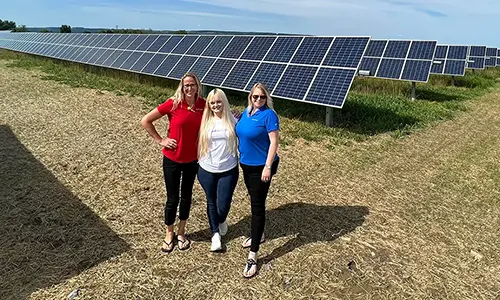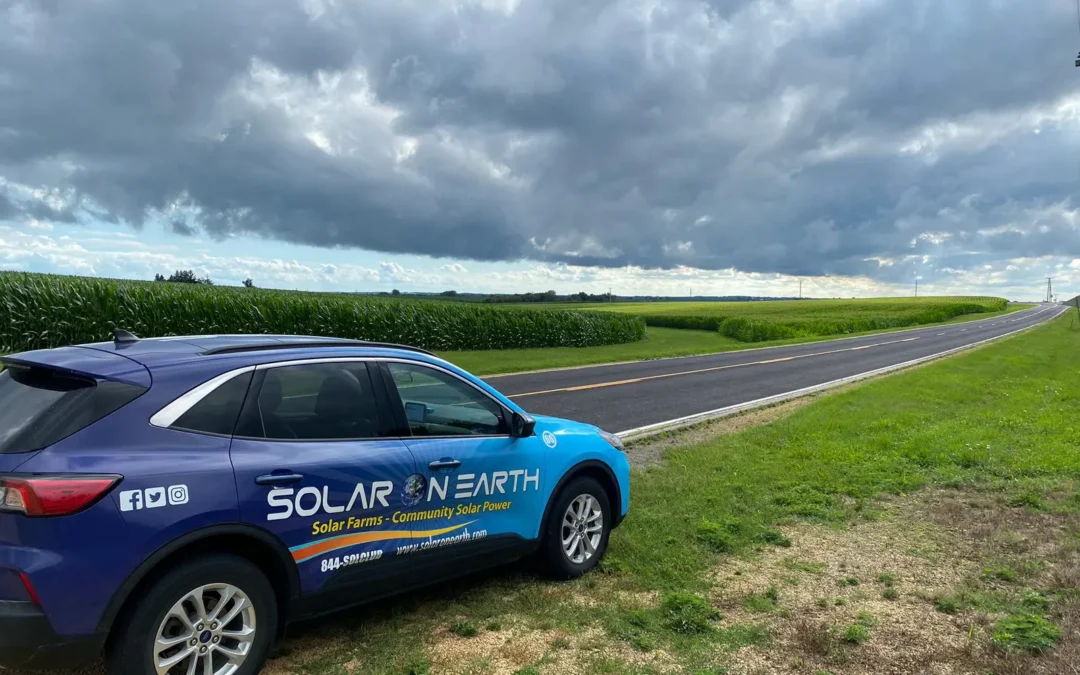We’ve all seen the fantastic views of seemingly endless farmland as we drive down highways and back roads all across America. It is part of what makes many road trips so memorable. The beauty and simplicity of acres and acres of crops is something that we can all imagine and appreciate.
Behind the scenery, though, is a farmer, who, like most of those in his community, is trying to make their way, pay their bills, and ensure their farm’s success, which often existed long before them. So, as the net farm income is slated to decrease by over 25 percent compared to 2022, and production-related expenses going up by around 3 percent, many of the businesses we rely on for food (farms) are having to search for additional revenue streams. Some sell off pieces of their land to developers until there’s little left, others rely on non-farm income. While this is not uncommon, it is, perhaps going to become more essential. Meanwhile, a growing number are turning to Agrivoltaics.
Agrivoltaics is the dual use of farmland for both agricultural and solar power production, often referred to as agrisolar. In previous posts, we have discussed the benefits and misconceptions surrounding Community Solar from the consumer’s point of view, but equally important is the many upsides it has for those involved in the supply of Community Solar.
Community Solar offers farms a unique opportunity to create additional income from their land. Of course, a farm is typically an ideal location for a solar farm with plenty of flat space and ample sunlight. However, they also create a unique opportunity for diversification of a farm’s acreage, creating additional revenue streams and opening the door for potential energy and cost savings for farms and the communities they serve.
The money doesn’t merely add up to pennies on the dollar, either. Leasing land for Community Solar can mean a substantial monthly income without needing to forfeit ownership, and they would pass the savings on to the consumers of the energy as well. The farms maintain their rights to the land, make more money, and perhaps use those revenues that help upgrade their technology and equipment, keep their workforce on staff, and the economy going.
This isn’t exactly a new concept, either. There are plenty of examples of farms converting a portion of their land to be used for solar, A blueberry farm in Maine, and grazing sheep in Virginia; these are creating tax revenues for states, savings for consumers, clean energy for the environment, jobs for skilled and unskilled workers and more. The benefits of solar are plentiful and will be shared by many. In later blogs, we will touch on each more in-depth.

Members of the Solar On Earth leadership team at the ribbon cutting ceremony at Howard Regner’s farm on July 27, 2022.
Howard Regner, a farmer residing in Onieda County, NY, took the opportunity to add solar panels to his farm. He said agrisolar has been a way to make better use of under-producing land on his farm. “I was concerned about the hard costs of farming. All of the day-to-day expenses just to keep the farm going. I’m 67-years-old and looking to do less, but not retire,” Regner said. “Rather than sell off pieces to a Realtor, leasing to a solar farm enables me to keep the complete farm…intact. It’s sustainable agriculture.” Regner continues, “This way, when the lease is done and the solar panels removed, my family can use the land for agriculture again.”
Regner’s experience with agrisolar is a growing source of hope for American farmers. Creating sustainable solutions for families and businesses to save money without sacrificing the things they work so hard for. Agrisolar is one way that we can help make that happen.
The views will still be beautiful as you coast down a dirt road or paved asphalt. While there may be an occasional solar farm, less than 1% of the land area in America is necessary to power the entire country. So, while it may be a momentary interruption of the view, there’s something about the idea of economic growth meeting environmental sustainability that brings about a different kind of charm. Community Solar means everyone can benefit in more ways than one, without giving up hard-earned dollars or land.
